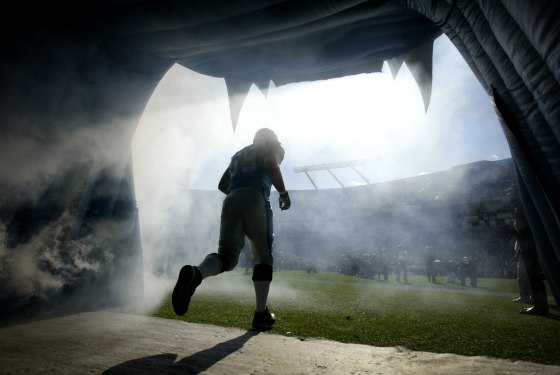“I have something.” He said it so casually. “I have something.”
We were two black, bulldozer dads watching our sons’ soccer practices in a leafy New York suburb on a late summer weekday, his on an under-12 team, mine on an under-13. The conversation had come around to why our boys were playing soccer and not more traditional sports popular in black communities, such as basketball and football.
“When I was a kid there was no soccer in my high school, so I went out for football,” he recounted. “I don’t think my parents ever came to see me play. But my mother does tell the story of how I came home in tears after my first practice. A guy had hit me so hard. I had the wrong-sized helmet. So I got a one that fit better and went back.”
There was no hint of regret for having played the game. He went on to play Division I football in college, playing less than two seasons after a leg injury ended his career. (The quarterback he lined up behind, however, went on to NFL fame and riches.)
But one reason he won’t let his two sons go out for football is the epidemic of chronic traumatic encephalopathy (CTE) — the degenerative brain disease stemming from repeated blows to the head — plaguing the sport. I nodded in agreement.
Then he pointed to his head and said: “I have something. I get these terrible headaches, migraines, and I know it goes back to my football days.”
Yes, it’s anecdotal, and, yes, there are lots of causes of severe headaches. And there is still no definitive way to diagnose CTE except post-mortem. The disease itself entered the mainstream lexicon with the 2015 film, “Concussion,” starring Will Smith. In recent years, scores of former college players, following in the footsteps of their NFL brethren, have started coming forward to say that they believe there is a direct link between their time on the gridiron and what ails them. A 2017 study in the Journal of the American Medical Association found CTE in 99 percent of brains obtained from deceased NFL players. College players came in at 91 percent, and high school players 21 percent.
Chris Nowinski, co-founder and CEO of the Concussion Legacy Foundation, said there is no “intelligent argument” for football not being a direct link to CTE. “The Mayo Clinic just did a random review of their brain bank, and of the 15 college football players that they found, 10 of them have CTE.”
In this, the 150th year of the college game, players are no longer suffering in silence. Tsunamis of concussion lawsuits – over 350 and counting, each representing groups of players from specific schools – are being filed against the National Collegiate Athletic Association. You probably have never heard of any of these players, unless you are a die-hard booster of your alma mater’s football team, because none of them ever got to the NFL.
“There is no union as there is in the NFL,” Nowinski said. “The players are not famous, there is a larger pool and there is no long-term care. In the NFL there is an incentive to come forward; there is medical care, services or a lawsuit to join.”
While the NFL, which is celebrating its 100th season, has its own problems beyond CTE, you can bet it’s monitoring the legal situation closely since the NCAA is essentially its farm system. Data from the National Federation of State High School Associations shows participation at the high school level is down 6.1 percent over the past decade. High-profile players are quitting left and right – see the Indianapolis Colts Andrew Luck and the New England Patriots Rob Gronkowski – though neither attributed their leaving the game to CTE or any kind of brain trauma
The NCAA and individual colleges, for their part, are fighting the lawsuits, claiming they are not legally responsible for anything that may linger or crop up after student-athletes’ playing days. But the risk of permanent injury is ever present, and the NCAA may be afraid that if these lawsuits are successful, it may open the floodgates to its biggest nightmare: actually paying college athletes in the revenue-producing sports.
“CTE provides a great reason to start paying college student athletes,” Nowinski said. “In the NFL, they have eliminated hitting in practice. In college the majority of concussions are still happening in practice, where the college coaches have no incentive to not beat up the kids all week. People get beat up worse on the scout team.”
As the soccer practice wound down, my fellow parent waxed about the two-a-day practices he had to endure in his playing days. He went on to graduate and attend law school. But now, there was no declaration of animosity toward his school for what may be affecting him. He still watches games, though not with the blind allegiance of fanatical “Roll Tide” or “Go Big Blue” supporters. He knows that on every football field on every Saturday in the fall, there are young men like him who either have or one day will have “something.”
